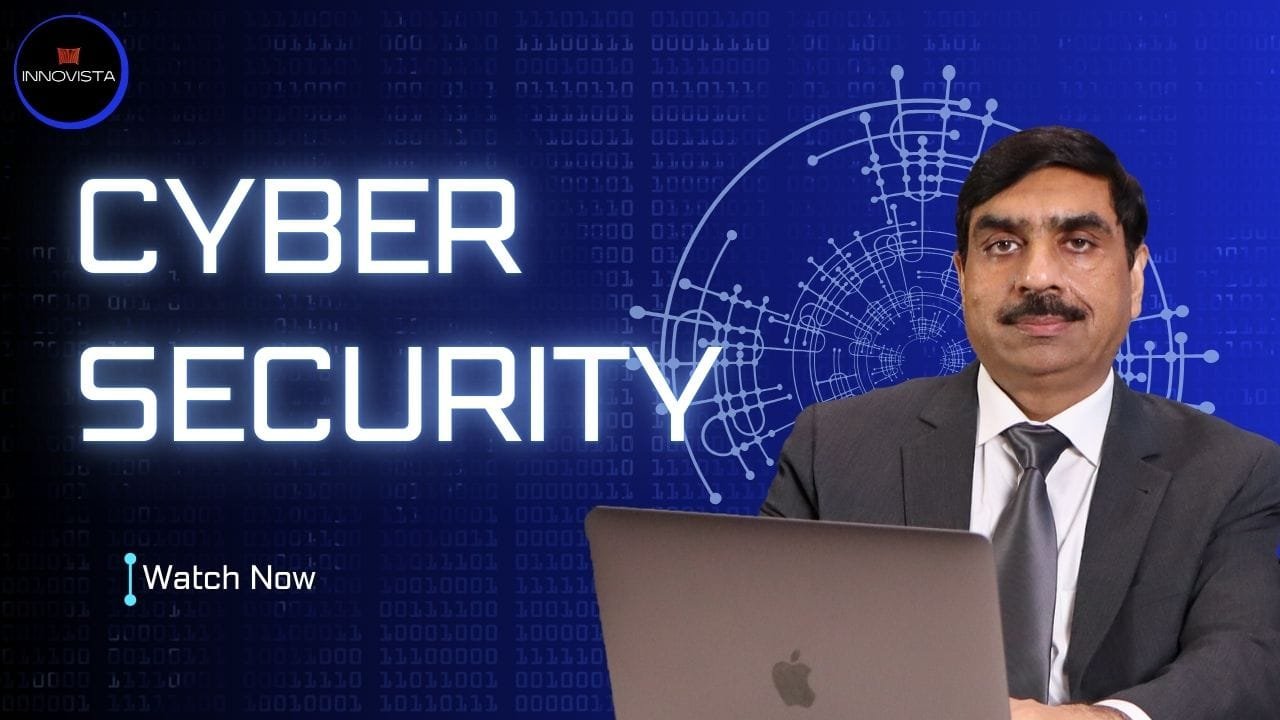What do you learn?
You will acquire the necessary knowledge and skills to effectively conduct gap analysis and implement cyber security measures to protect data and information systems in any organization.
Course Requirements
This course is open to all individuals who wish to acquire a comprehensive understanding of cyber security. There are no prerequisites.
Course Description
In today's interconnected world, implementing cyber security measures is crucial for protecting digital assets from ongoing cyber threats. The field of cyber security is constantly evolving, and in the current digital environment, the need for skilled professionals is higher than ever before.
We have designed our Cyber Security course on this InnoVista (LMS) to equip you with the fundamental knowledge and skills required to successfully implement cyber security measures in any organization. We structure the course to accommodate individuals with both technical and non-technical backgrounds, ensuring that the information is easily accessible and useful to all participants.
The curriculum covers a fundamental understanding of the information and communications technology (ICT) environment, which constitutes cyberspace. It explains basic cyber security concepts, various categories of cyber threats, and case studies of significant cyber-attacks. This course provides a thorough examination of international cyber security organizations and certification bodies, highlighting their contributions to improving the global cyber security landscape. The course gives students a solid understanding of the cyber security industry by highlighting professional paths and domains. It will give students the knowledge and abilities they need to carry out gap analyses and put cyber security measures in place to safeguard data and information systems in any kind of business.
Students who successfully complete this course will have skills in areas of information security governance, risk, and compliance (GRC), such as policy drafting, risk assessment, risk treatment, and audits. It also includes skills to use the NIST Cyber Security Framework and the ISO/IEC 27001 standard for the implementation of information security management systems (ISMS) in any enterprise. In the end, it provides a comprehensive overview of national cyber security initiatives, providing valuable insights into career opportunities in the field.
Enroll today and take the first step towards a future-proof career in cyber security.
Course Currilcum
-
- 1 Why is this course valuable? 00:06:00
- 2 Why work in Cyber Security? 00:05:00
- 3 Cyber Security’s impact on economy, security 00:09:00
- 4 Learning Objectives 00:04:00
- Cyber Security: Module 1 Test 00:03:00
-
- 5 Understanding ICT: Computers, Part 1 00:07:00
- 6 Understanding ICT: Computers, Part 2 00:04:00
- 7 Understanding ICT: Networks, Part 1 00:03:00
- 8 Understanding ICT: Networks, Part 2 00:08:00
- 9 Understanding ICT: Networks, Part 3 00:07:00
- 10 Understanding ICT: Telecom, Cyberspace 00:09:00
- Cyber Security: Module 2 Test 00:17:00
- 11 Fundamental Concepts in Cybersecurity, Part 1 00:09:00
- 12 Fundamental Concepts in Cybersecurity, Part 2 00:09:00
- 13 Fundamental Concepts in Cybersecurity, Part 3 00:06:00
- 14 Fundamental Concepts in Cybersecurity, Part 4 00:08:00
- Cyber Security: Module 3 Test 00:12:00
- 19 Cyber Threat Case Studies, Part 2 00:06:00
- 20 Cyber Threat Case Studies, Part 3 00:07:00
- 21 Cyber Threat Case Studies, Part 4 00:06:00
- 22 Cyber Threat Case Studies, Part 5 00:09:00
- Cyber Security: Module 5 Test 00:13:00
- 26 Classification of Cybersecurity Domains, Part 1 00:10:00
- 27 Classification of Cybersecurity Domains, Part 2 00:10:00
- 28 Classification of Cyber Security Domains, Part 3 00:04:00
- Cyber Security: Module 7 Test 00:12:00
- 34 Information Security Risk Management (First Method) 00:08:00
- 35 First Method (Asset Identification) 00:11:00
- 36 First Method (Asset Valuation) 00:08:00
- 37 First Method (Threats and Vulnerabilities) 00:10:00
- 38 First Method (Risk Assessment: Qualitative) 00:10:00
- 39 First Method (Risk Assessment: Quantitative) 00:11:00
- 40 First Method (Risk Response or Risk Treatment) 00:10:00
- 41 Risk Management: Second Method (Asset Valuation) 00:09:00
- 42 Second Method (Asset Cat, Vulnerability Rating) 00:11:00
- 43 Second Method (Threat Assessment and Risk Impact) 00:09:00
- 44 Second Method (Control Implementation and Gap Analysis) 00:09:00
- 45 Risk management summary and resources 00:04:00
- Cyber Security: Module 9 Test 00:13:00
- 57 NIST Cyber Security Framework (CSF) – 2.0 Components 00:12:00
- 58 NIST CSF 2.0 – Core, Functions – Govern and Identify 00:12:00
- 59 NIST CSF 2.0 – Core, Functions – Protect, Detect, Response and Recover 00:12:00
- 60 NIST CSF 2.0 – Organizational Profiles and Tiers 00:12:00
- 61 NIST CSF 2.0 – Improving Risk Management Communication 00:09:00
- 62 NIST CSF 2.0 – Document overview (CSF Components) 00:10:00
- 63 NIST CSF 2.0 – Community Profile (Incident Response) 00:13:00
- Cyber Security: Module 11 Test 00:03:00
- 71 Final Thoughts (Cyber Security Course) with Hisham Sarwar 00:10:00
- Cyber Security Final Exam for Certification 00:20:00
Course Instructor
Course Reviews
5
- 5 stars0
- 4 stars0
- 3 stars0
- 2 stars0
- 1 stars0
No Reviews found for this course.




